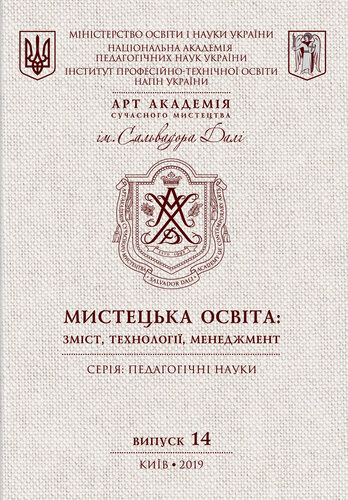METHODOLOGY FOR INTRODUCING MODULAR TECHNOLOGY TRAINING IN DECORATIVE AND APPLIED CREATIVITY AT HIGH SCHOOL
Abstract
The article actualizes the problem of introduction of personally oriented learning technologies in higher education institutions. There is a need to find effective technologies for teaching arts and crafts in the preparation of future teachers. An analysis of didactic approaches to the use of unit learning in higher education was presented. The concept of "modular learning technology" formulating in the context of training in decorative and applied arts. The key principles of modular learning technology reveal: structuring, problem solving, variability, adaptability and feedback. These principles make it possible for students to make personal choices about their learning model. They also provide a professional development program for each student. The characteristics of the main components of the didactic system of modular training have been highlighted in the work. The main one is the flexibility of the educational process. The introduction of modular training in the methodology of training future teachers of extracurricular education in arts and crafts proposes the use of the method of collapsed information structures. The practical use of this method is demonstrated by the example of the development of the content module "Folk Embroidery" in the course "Workshop on decorative and applied art". In particular, the modular structure of the discipline was substantiated through the system "content module-didactic module-level modules". One of the topics that captures the basic, required part and the level of advanced study in the study material characterizes level modules. Also a sample construction of the content structure of the didactic module "Transparent-counting seams" for future heads of clubs has been presented. The focus is on the need to create a number of pedagogical conditions for the effective implementation of unit training. Of particular importance is the provision of personal control of students over their own learning process.
References
Andrus` O. I. Pry`ncy`py` modul`nogo navchannya ekonomichny`x dy`scy`plin studentiv texnichny`x universy`tetiv. Visny`k NTUU "KPI". Filosofiya. Psy`xologiya. Pedagogika, 2006. #2. S. 105-111.
Paxomova N. G. Metody`chna osnova modul`noyi texnologiyi navchannya. Upravlinnya v osviti : zbirny`k materialiv V Mizhnarodnoyi naukovo-prakty`chnoyi konferenciyi (14-16 kvitnya 2011 r.). L`viv. 2011. S. 243–244.
Strel`nikov V. Yu. Britchenko I. G. Suchasni texnologiyi navchannya u vy`shhij shkoli: modul`ny`j posibny`k dlya sluxachiv avtors`ky`x kursiv pidvy`shhennya kvalifikaciyi vy`kladachiv. Poltava: MIKP PUET, 2013. 309 s.
Czarenko O. Modul`na texnologiya navchannya metody`chny`x kompetentnostej majbutnix uchy`teliv. Naukovi zapy`sky`. Seriya: Pedagogichni nauky`. 2008. S. 266–271.

This work is licensed under a Creative Commons Attribution-NonCommercial 4.0 International License.

